Below are pictures of a brake master cylinder from a 1998 ford crown
victoria police interceptor with traction control. At the time that
this master cylinder was removed due to a slow leak around the rear cup
seals, the vehicle in question was around 12 years old.
Here's the master cylinder after disconnecting the brake lines and
pulling it off the power brake booster.
The proportioning valve for the rear brake circuit is still attached to
the brake pipe port.
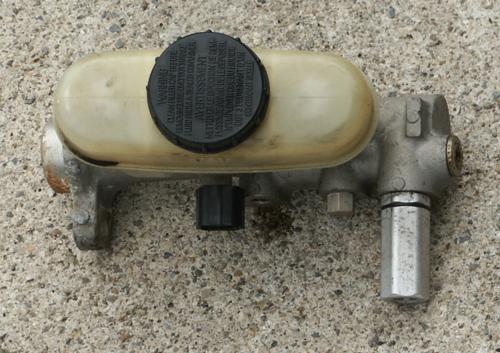
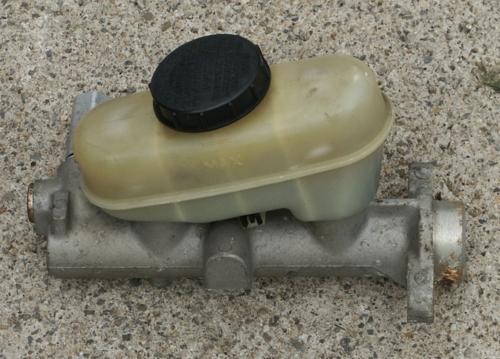
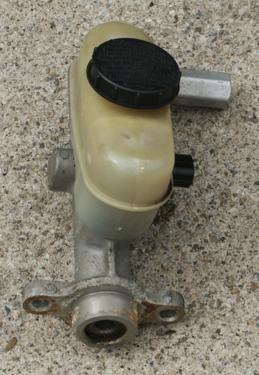
The first thing I want to do is to disconnect the aluminum casting from
the nylon reservoir.
The factory shop manual is rather vague about what tools to use. On
another ford bendix master cylinder, I had tried using some flat
prybars intended for residental home
carpentry, but this left lots of tool marks on the reservoir.
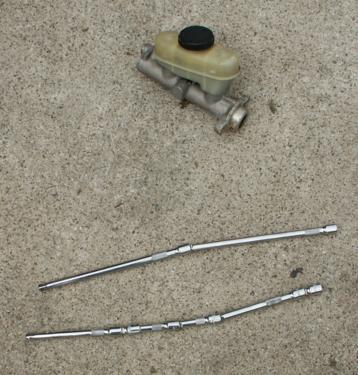
Later, I found that a couple long 3/8" extension bars could be used as
a pair of levers to seperate the two. Here's the procedure:
-Lay the master cylinder on the ground and hold it stationary with your
shoe
-Insert the two extension bars in between the reservoir and the
aluminum casting as shown
-Hold one extension bar stationary with your hand while you move the
other in the opposite direction
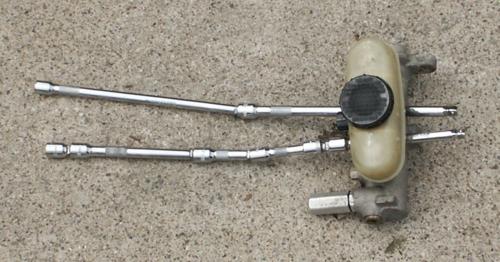
After you pop out one port of the reservoir, the other will come out
easily if you lift it at an angle with your hands
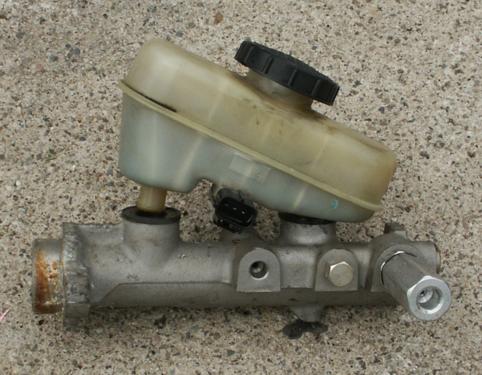
Here's the reservoir off the master cylinder entirely
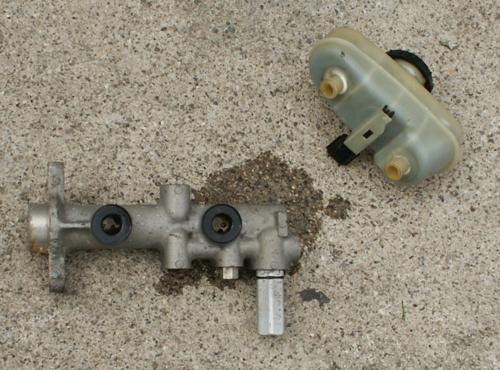
There are some white colored stress areas on the reservoir, but it
should be resuable on a remanufactured master cylinder that doesn't
come with a new reservoir and requires you to reuse your old one.
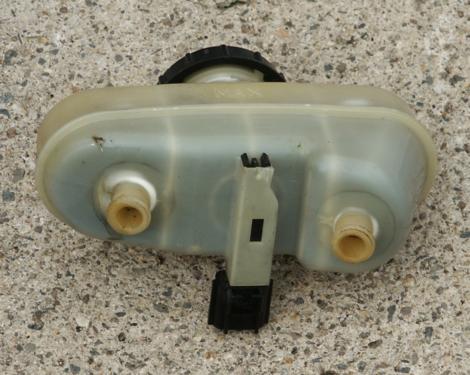
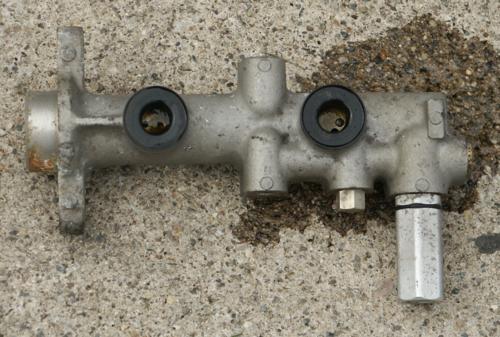
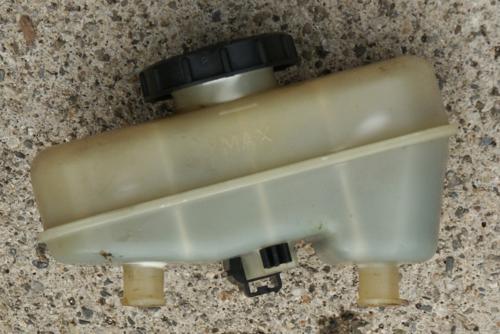

Note that these 3/8" extension bars bend at odd angles because they are
"wobble bars". I had these handy since they work much better than
swivel universal joints for removing the nuts which hold the power
brake booster to the firewall. They also work very nicely for removing
the bolts which hold the engine starter motor to the transmission in
the 1992-2002 crownvics.
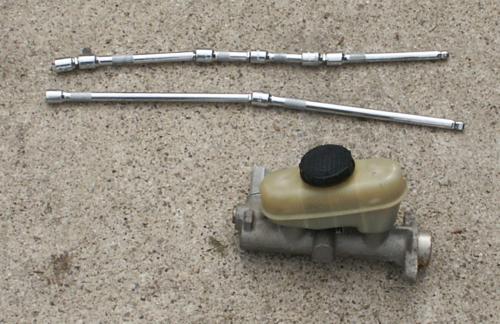
Here are all the parts inside the master cylinder
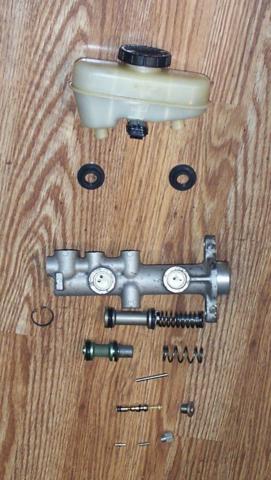
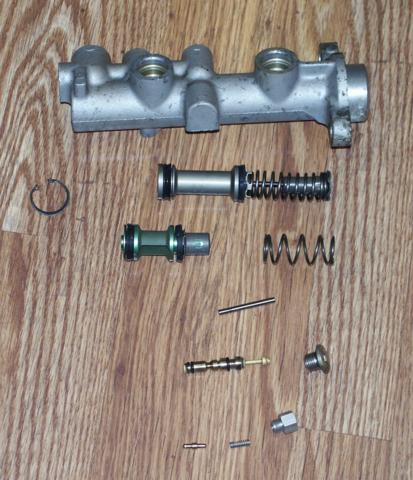
Here is the side that the brake pipe ports connect to. The large
diameter port on the right is where the rear brake proportioning valve
would normally be connected. The port in the middle would normally have
a cap in it to hold an internal spring loaded valve in the master
cylinder. And the one on the left would normally connect to the front
brake circuit.
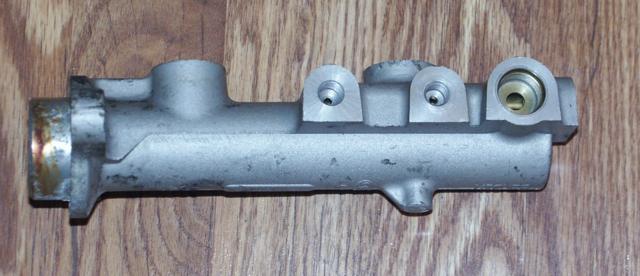
One odd feature with this master cylinder is that there's a hollow area
between the front & rear brake circuits with a valve inserted in
it. This is needed to allow fluid to be returned to the master cylinder
reservoir during traction control operation.
The 1992-1994 crownvics with traction control did not have this valve.
But they had an additional brake fluid reservoir mounted on the
antilock brake pump assembly. These vehicles actually had two brake
fluid reservoirs in the car, one was mounted on the master cylinder,
the other on top of the antilock brake pump assembly.
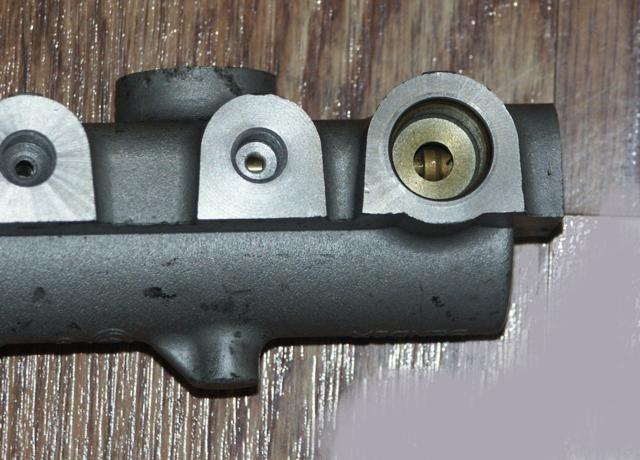
Here is the master cylinder with the valve moved a little bit

Here is the master cylinder with the valve removed, but the spring
loaded cover installed
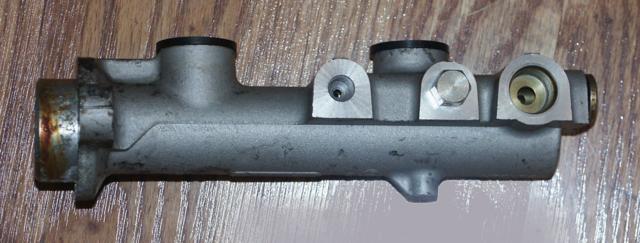
Here is the master cylinder from the top where the reservoir would
normally be mounted

The raised area in the casting on this side is where to speed control
deactivation switch for the cruise control system used to be mounted in
the 1997 & earlier crownvics. In the 1998 and later cars, ford
moved the deactivation switch to the brake pedal box inside the car so
this area is no longer drilled and tapped on the later mastercylinders.
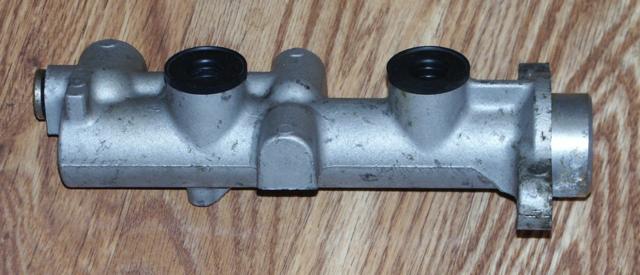
Here is the master cylinder with the spring loaded centering system for
the valve removed
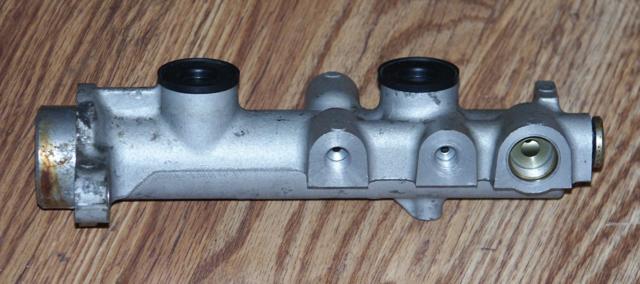
And here is the spring loaded centering system components

This is a closeup of one of the front reservoir port. Take note that
one port seems what looks like a plug in it.
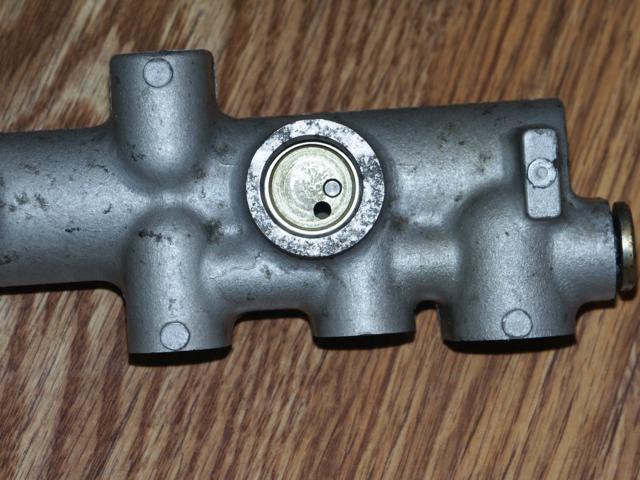
That thing that looked like a plug was really a metal rod to hold that
went through the master cylinder to act as a piston stop.
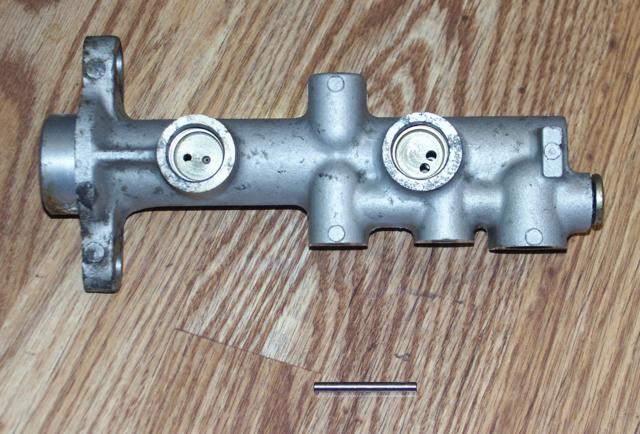
Here are the primary and secondary pistons from inside the master
cylinder

The piston on the right looks pretty normal. But the one on the left is
an oddball with a hole cut through it.

Here is the piston with the stop rod that would normally be inserted
when the pistons were inside the master cylinder
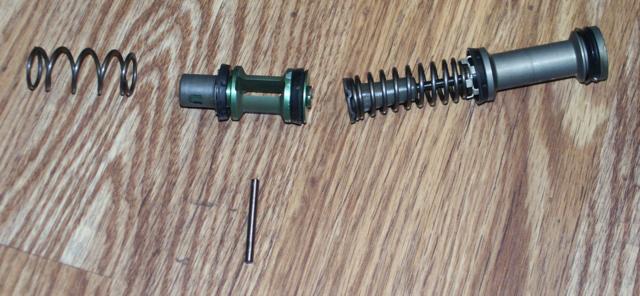
The stop piston stop rod normally passes through this hole


The bottom of that green colored piston looks a little odd too
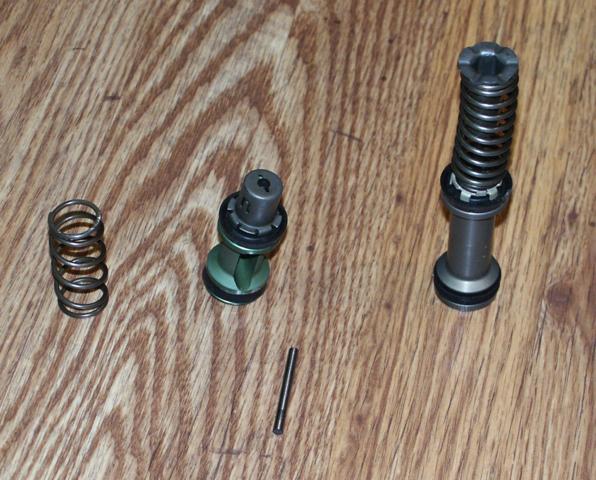
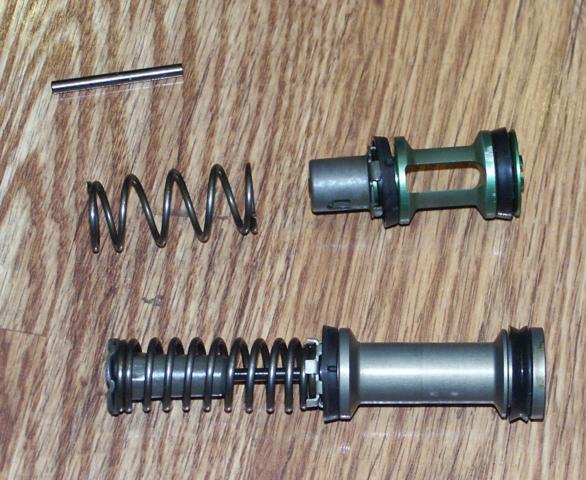
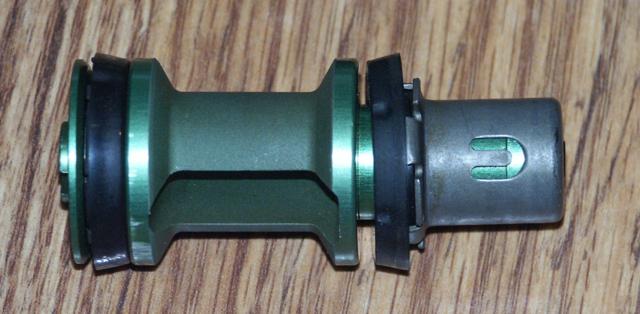
Here's what's underneath the cover

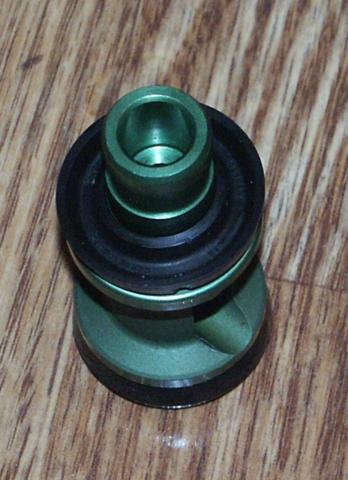
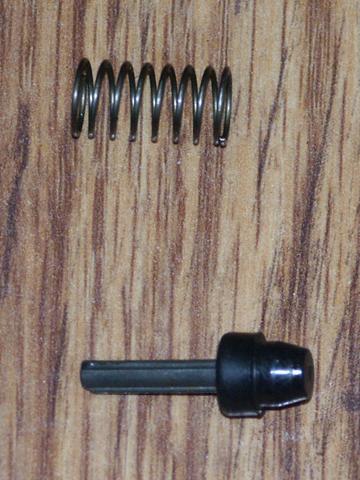
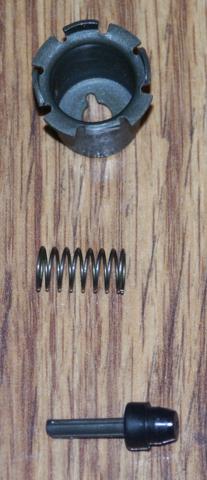
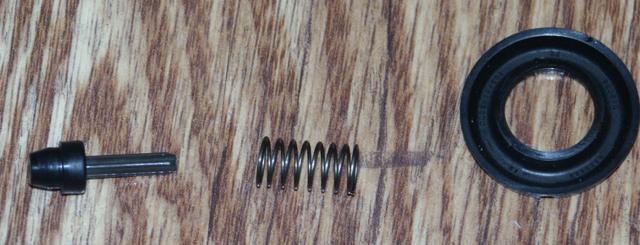

Here are a few closeup pictures of the valve which is normally inserted
between the two brake pipe ports on the master cylinder.

Notice how there are some moveable parts on this piston?


Here's how the valve would normally insert into the master cylinder
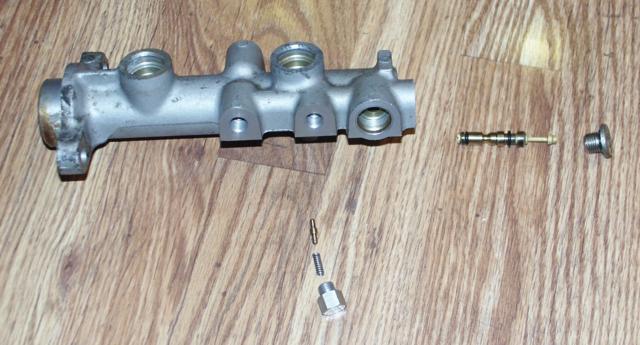
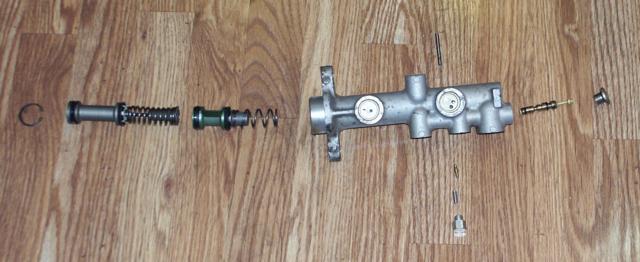
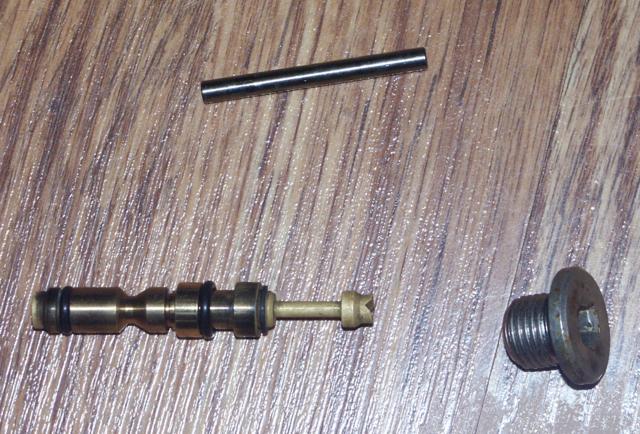
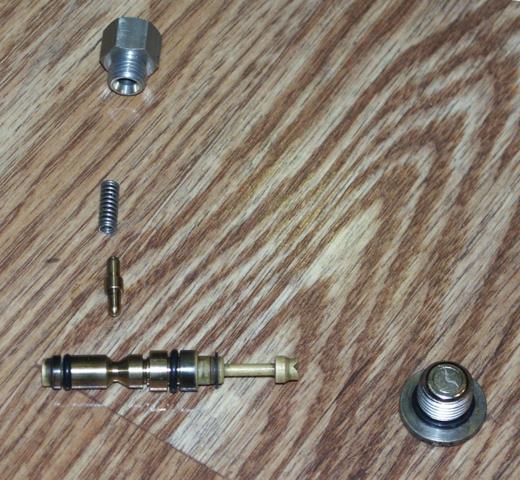
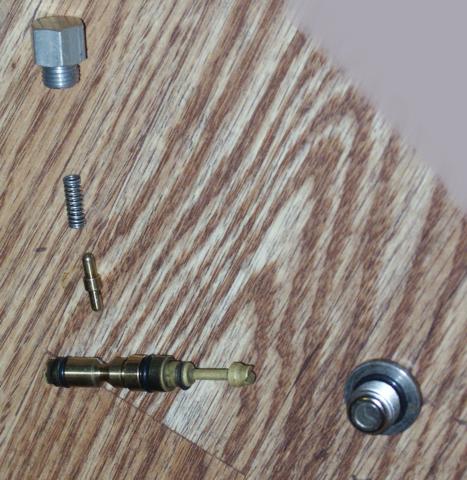

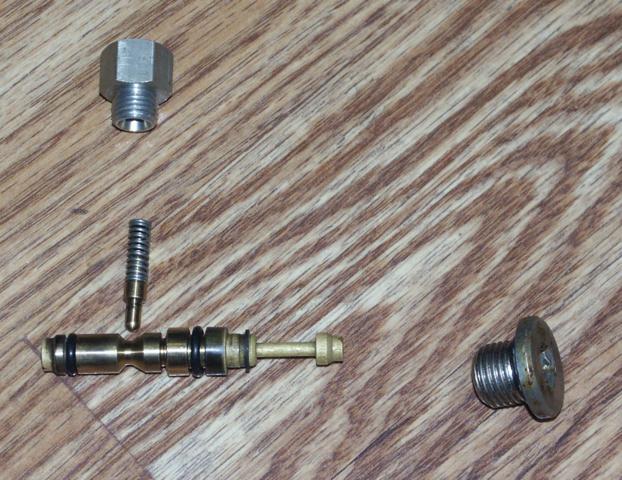


The aluminum bore of the master cylinder had some scatches in it that
were causing a small leak. Unfortunetly, the pictures don't show these
defects too well.
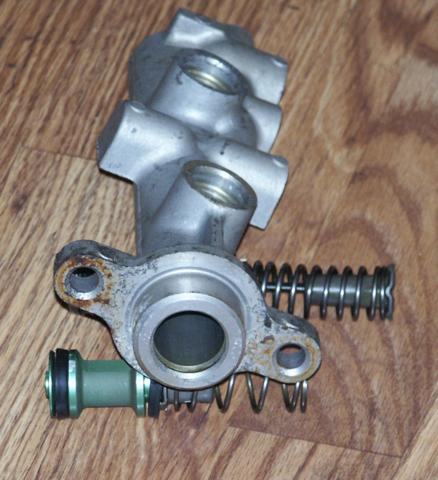
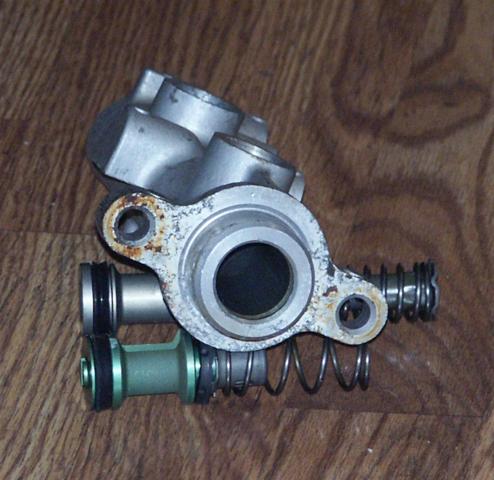
Here's the side of the fluid reservoir. That black electrical connector
is for the fluid level sensor. When the brake fluid level inside the
reservoir gets really low, a magnetic float sinks to the bottom of the
reservoir which then magnetically closes the switch to illuminate the
brake warning light on your crownvic's dashboard. The 1992+ crownvics
do not use a differential pressure combination valve anymore like
you'll find in some of the older "box bodies".
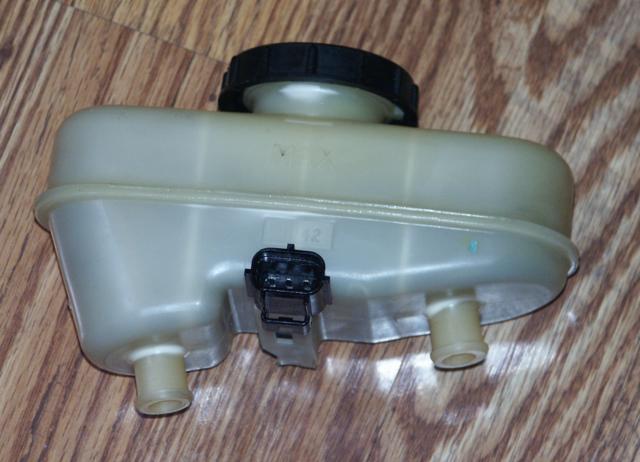
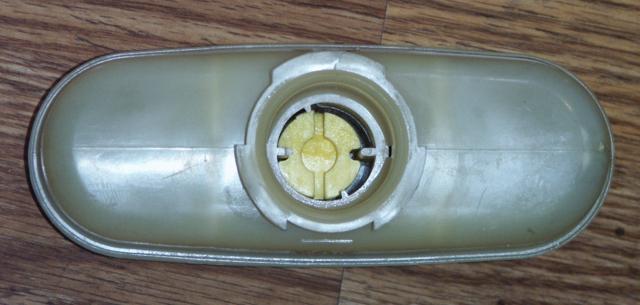
Here is a closeup of the fluid level sensor removed from the reservoir
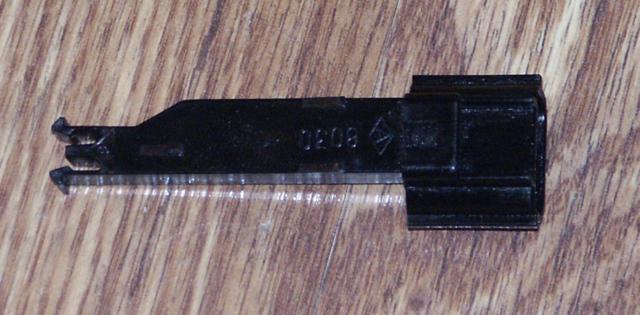
Here is the underside of the reservoir cap. If you look closely, you
can see "BENDIX" stamped in.
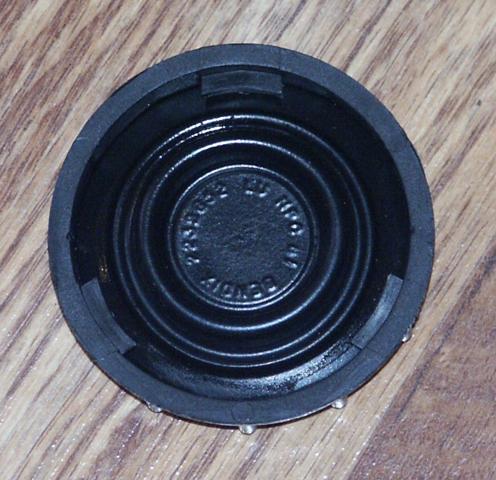
Here is the top of the warning cap. Have you ever read the cap on your
car? This one says: "WARNING CLEAN FILLER CAP BEFORE REMOVING. USE ONLY
DOT3 BRAKE FLUID FROM A SEALED CONTAINER".

The cap can be seperated from the epdm rubber seal inside. This is a
vented cap, and the rubber seal has a small hole cut in the middle.
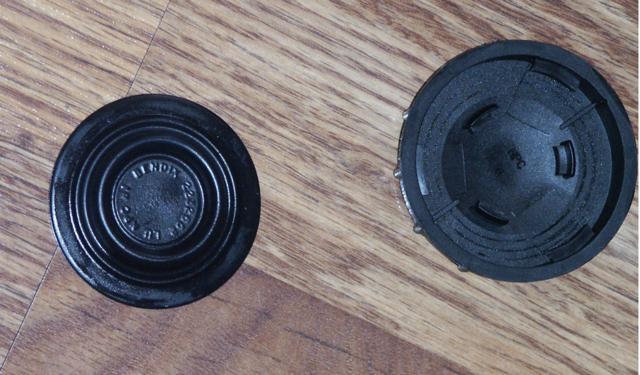
Here is the lock-ring which normally holds the pistons inside the
master cylinder bore.

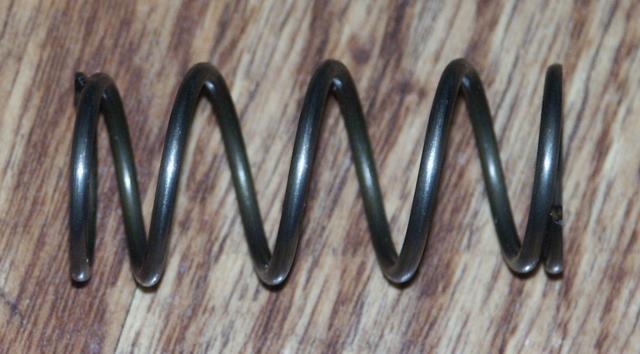
Here is the piston which normally controls the rear brake circuit
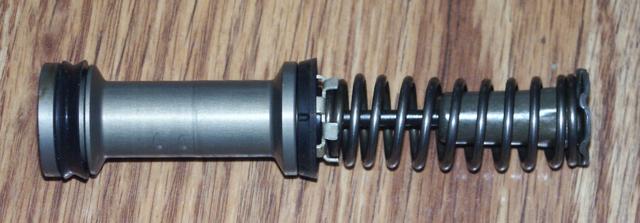
And the piston with the spring removed.

When the piston is assembled, the screw can be turned to recalibrate
the spring tension. This screw is not fully "bottomed out" from the
factory.
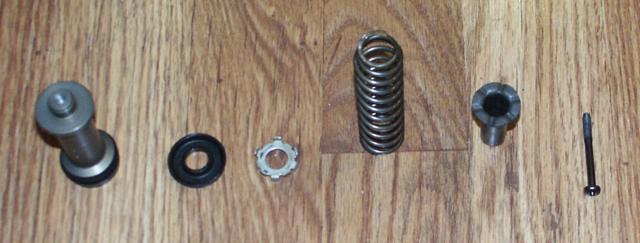
Here are the two rubber seals which hold the nylon brake fluid
reservoir in the aluminum master cylinder. Ford has been using the same
seals on bendix master cylinder since the 1980's when the cast iron
master cylinder were replaced with aluminum ones.
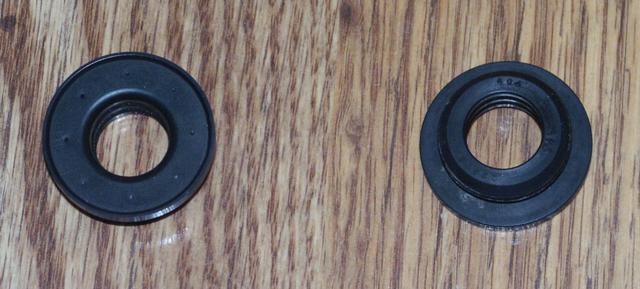
Some information about the traction control system operation is
contained in patent 5522651 and patent 5741049 that kelsey hayes
filed about the proportioning valve associated with this master
cylinder.
Do note that proportioning valves were eliminated all together when
ford changed over to the bosch 5.3 abs setup with electronic brake
distribution (EBD) in the 2001 model year. The previous crownvics used
an ate teves mark iv abs setup (1992-1997) or an ate teves mk20 abs
setup
(1998-2000) instead.
Also note that some 1996-2000 crownvic owners with traction control
have changed over to the proportioning valve setup used in the 1995
cars with traction control. This setup is more compact horizontally so
that the later police interceptor air intake zip tube can be installed.
Here's a picture of the master cylinder & proportioning valve setup
that was unique to the 1995 traction control cars:
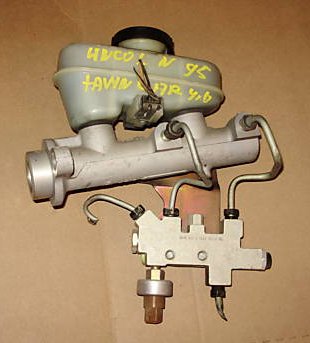
This setup does take up more space vertically, but there's plenty of
unused space underneath the master cylinder. It's just the huge
proportioning valve that sticks out horizontally that prohibits the
installation of the later high flow zip tube.
That electrical part hanging off the bottom of the proportioning valve
is a redundant brake pressure sensor (deac switch) for the cruise
control, it is
not a differential valve to illuminate the brake warning light on your
car's instrument panel. You do not need this sensor on the 1998-2000
crownvics because the deac switch is located on the brake pedal box
inside the car rather than under the hood in the brake hydraulic
circuitry like in the 1992-1997 cars.
































































